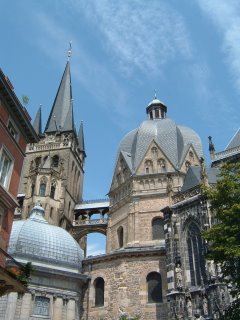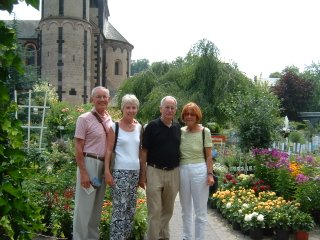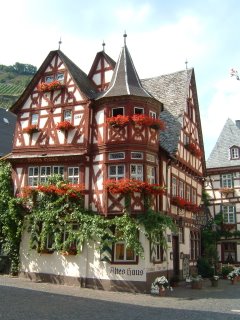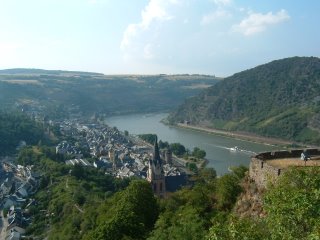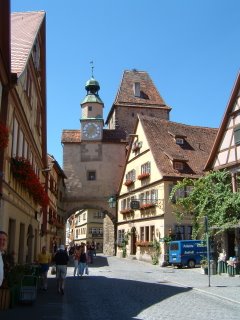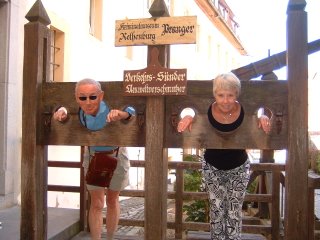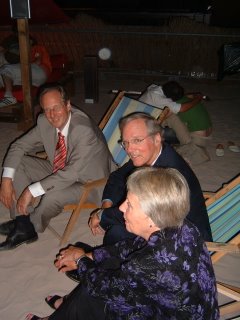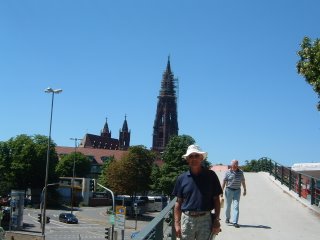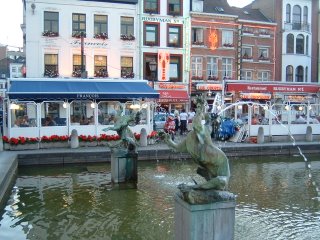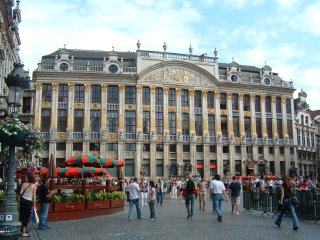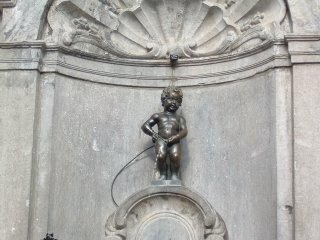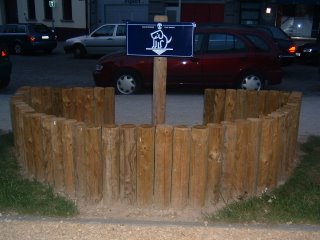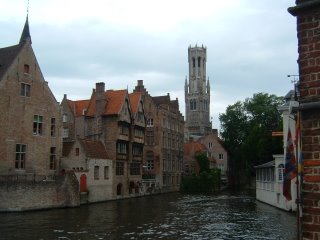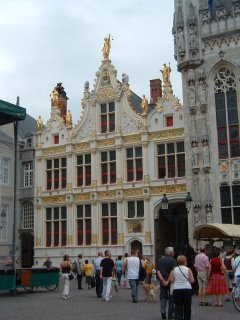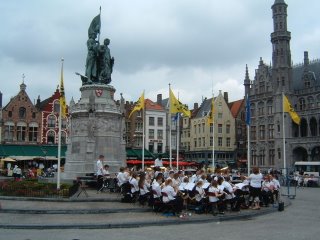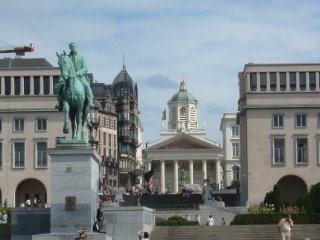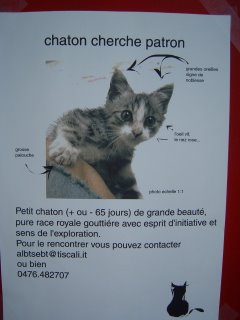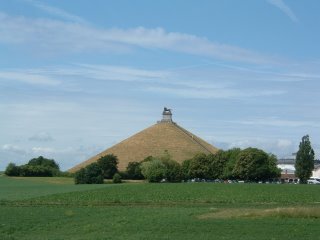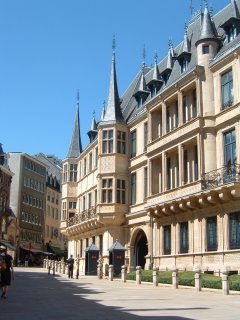Art and Wine
Alsace, July 16-17, and Burgundy, July 18-20
Returning once again to France, we stayed two nights between Mulhouse and Colmar in Baldersheim, an Alsatian village that clearly lusted after the region’s “Ville Fleurie” title as the following picture of our hotel suggests. Unlike Luxembourg, we neither saw nor heard German (except for tourists) in our village or elsewhere in Alsace, despite the short distance to the Rhine and the Germanic heritage reflected in the place names.
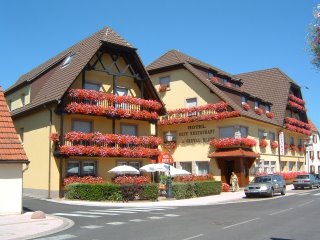
Au Cheval Blanc, Baldersheim
Our sightseeing focused on Colmar, especially the Unterlinden Museum with its wonderful collection of 15th-16th Century art, in particular the renowned Isenheim Altarpiece, which unfolds to reveal a series of paintings on multiple panels. Outside the museum is an early sculpture by Frederic Bartholdi, a native son of Colmar, who later undertook a much larger project for the New York harbor. However, we also found time for a picnic in the Alsatian vineyards, whose products we enjoyed at our hotel’s restaurant, and a drive through the Vosges foothills.
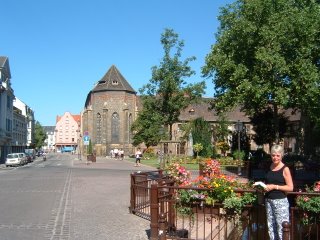
Unterlinden Museum, Colmar
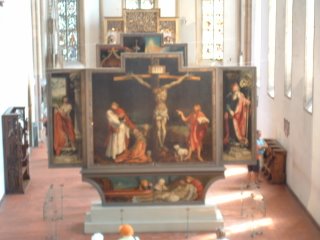
Isenheim Altarpiece, Unterlinden Museum
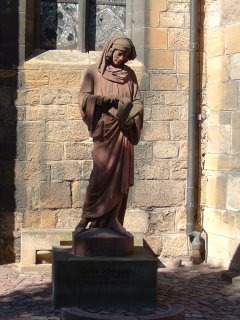
Bartholdi sculpture, Colmar
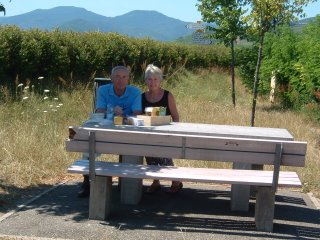
Pique-nique in Alsace vineyards
We pushed on to Burgundy the next day to rendezvous in Dijon with son Fritz, who came from a tutoring gig in Switzerland, and our good friends Phyllis Bonanno and Evan Berlack, who interrupted a business trip to join us. Local temperatures approached 40 degrees, the highest we had experienced since Spain, but we fortunately had reservations south of town in a converted 17th Century chateau with a swimming pool and lush park. We made good use of the pool the first afternoon before dinner in the garden with some wonderful Burgundy.
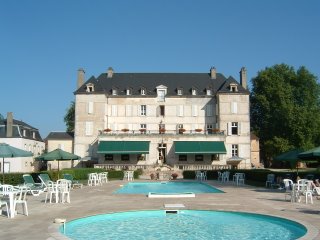
Château de Saulon, our hotel outside Dijon
The next morning the five of us braved the heat and drove to Beaune to visit the Hotel-Dieu, the beautiful hospice built in the 15th Century by the chancellor of Duke Philip the Good as an act of charity. (“A lawyer who did good!” said attorney Evan.) Part palace and part hospital, it was designed with the belief that the sick in body and spirit would benefit from outstanding art. Its most famous piece is Roger van der Weyden’s polyptych of the Last Judgment, among the finest works we have seen on our trip. Medical activities were transferred in 1971 to a modern hospital, where they receive continued support from a world renowned annual auction of wine from the vineyards left by the chancellor and others as an endowment for the Hotel-Dieu.

With Phyllis, Evan, and Fritz at Hôtel-Dieu, Beaune
All this talk of wine led us from Beaune to Volnay, a village with some 30 vintners on the Cote-d’Or. We wanted to linger in the cave we visited, as much for the cool temperature as for the outstanding wine, but the arrival of further customers led us to make our selections and find shade in the village square with a fine view of the vineyareds—the perfect end to a great reunion. We were obliged to return to Dijon at that point to put Fritz, Phyllis and Evan on their trains.
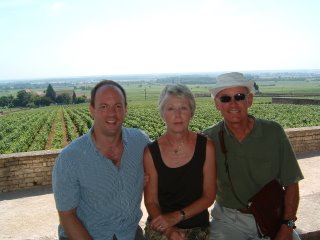
With Fritz in Volnay (Burgundy)
Alone for our final day in Burgundy, we toured the Ducal Palace, which was designed by Frederic Mansart of Mansart roof fame and searched out a wifi hotspot to post these latest chapters on our blog.
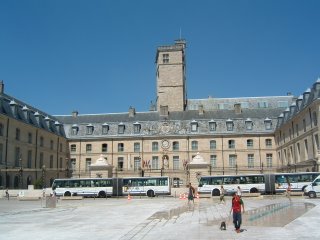
Palais des Ducs, Dijon
